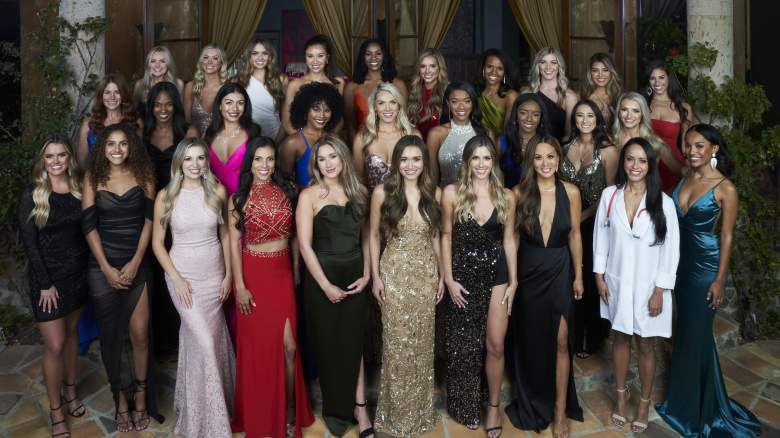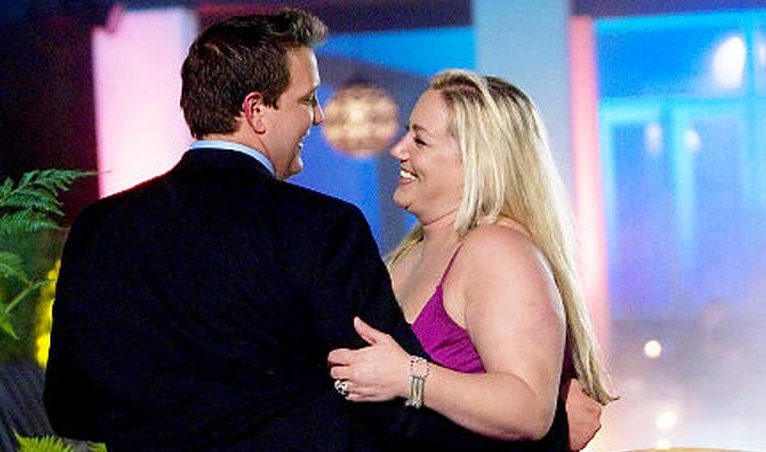
ABC A lineup of "The Bachelor" beauties.
The “Bachelor” franchise has been making an effort to diversify its cast in recent years in regard to race and ethnicity. They have even taken steps to diversify in terms of age, with their upcoming spinoff “Senior Bachelor,” according to Bustle. However, one area in which the show remains rigid in its cast selection is body type.
Other than a few minor exceptions (for example, slightly overweight bachelor Bob Guiney in season 4 almost two decades ago) the “Bachelor” and “Bachelorette” stars and suitors have all been thin and fit. Many fans and critics find this to be offensive, destructive and flat-out boring.
Nutritionist blogger Abby Langer lamented, “mom bods – what I would define as having stretch marks, poochy stomach, un-perky breasts – aren’t what the mainstream culture leads us to believe are ‘desirable.’ This is the crux of the problem, with The Bachelor and of society in general.”
Langer believes the “Bachelor” franchise is one of the greatest offenders, particularly toward women, because virtually every female cast member is “model-perfect, with long hair, big white teeth, and young.” Langer wrote, “The danger of showing only one type of woman in the show is that it suggests that only smaller, feminine women deserve love. That as women, our value is all in our appearance.”
Some fans argue that the show is meant to be a fantasy and not a mundane depiction of everyday life, Langer wrote. However, even if the psychological and social factors are taken out of the equation, the fact remains that viewers want to see people they relate to.
“Bachelor” and “Bachelorette” ratings have been slipping. Part of the reason may be that fans are tired of seeing people they have nothing in common with jump from one attractive suitor to another, many of whom seem virtually interchangeable. They want to see what the search for love looks like for their neighbors, friends and co-workers.
The Powers That Be Do Not Agree
Former host Chris Harrison and ABC executive Robert Mills don’t see it that way. Glamour magazine reported in September 2019 that when Chris Harrison was asked if there would ever be a plus-sized Bachelorette, he replied, “That’s not attractive, and television is a very visual medium.” According to Glamour, Mills promised weight diversity, then backtracked by saying, “A lot of it does revolve around who the lead is and who the lead wants to date. What you don’t want to do is say, ‘We’re going to put on somebody who’s more curvy,’ and then they’re gone the first night.”
That is actually exactly what happened the one time a plus-size model was cast, on Chris Soules’ season in 2015. Bo Stanley went home on night one, Glamour reported. There has not been a plus-sized cast member since.
Are People Getting Tired of Sameness, Even in Body Type?

Wymore/Fox“More to Love” aired on Fox TV in 2009.
Part of the reason may be that Fox aired a dating show in 2009 called “More to Love,” in which a 300-pound bachelor dated a pool of plus-size women, ranging from the slightly overweight to the very large. The show was not successful, but probably not for the reason TV executives think.
Not only was the show accused of exploiting sad, desperate women rather than depicting strong confident ones, but the lead ended up choosing the smallest women there. As the New York Daily News reported, “Contestant after contestant confesses, in the introductory moment, that they don’t like being big. They not only don’t like being big, they hate that they have tried to be thin and failed.”
This is not the type of premise “Bachelor” and “Bachelorette” fans clamoring for more body-size diversity are hoping for. One Reddit user wrote, “Wouldn’t mind seeing some body diversity on the show. I get that society has taught us to want to see thin people on tv, but with so many body positivity movements, I think it’s time The Bachelor franchise catch up.”
One reply read, “Totally agree with this. The fact that people’s minds instantly go to the extreme when talking about body diversity (either very thin or very fat) is part of problem. Body diversity does not just mean one or the other, it’s everyone. And clearly there is only one type of body being represented currently.”
Comments
‘Bachelor’ & ‘Bachelorette’ Fans Ask: Where Are All the Plus-Size Singles?